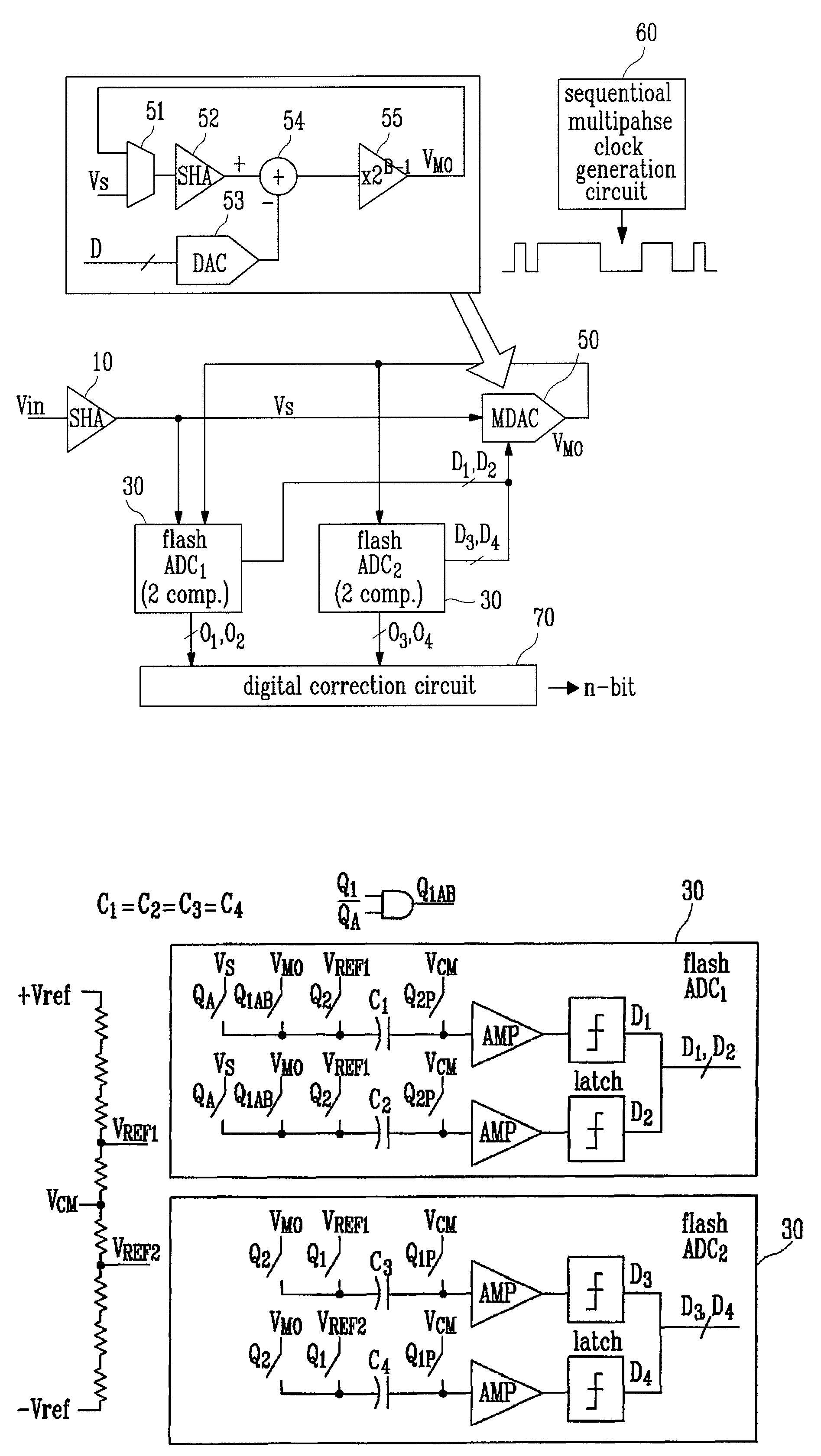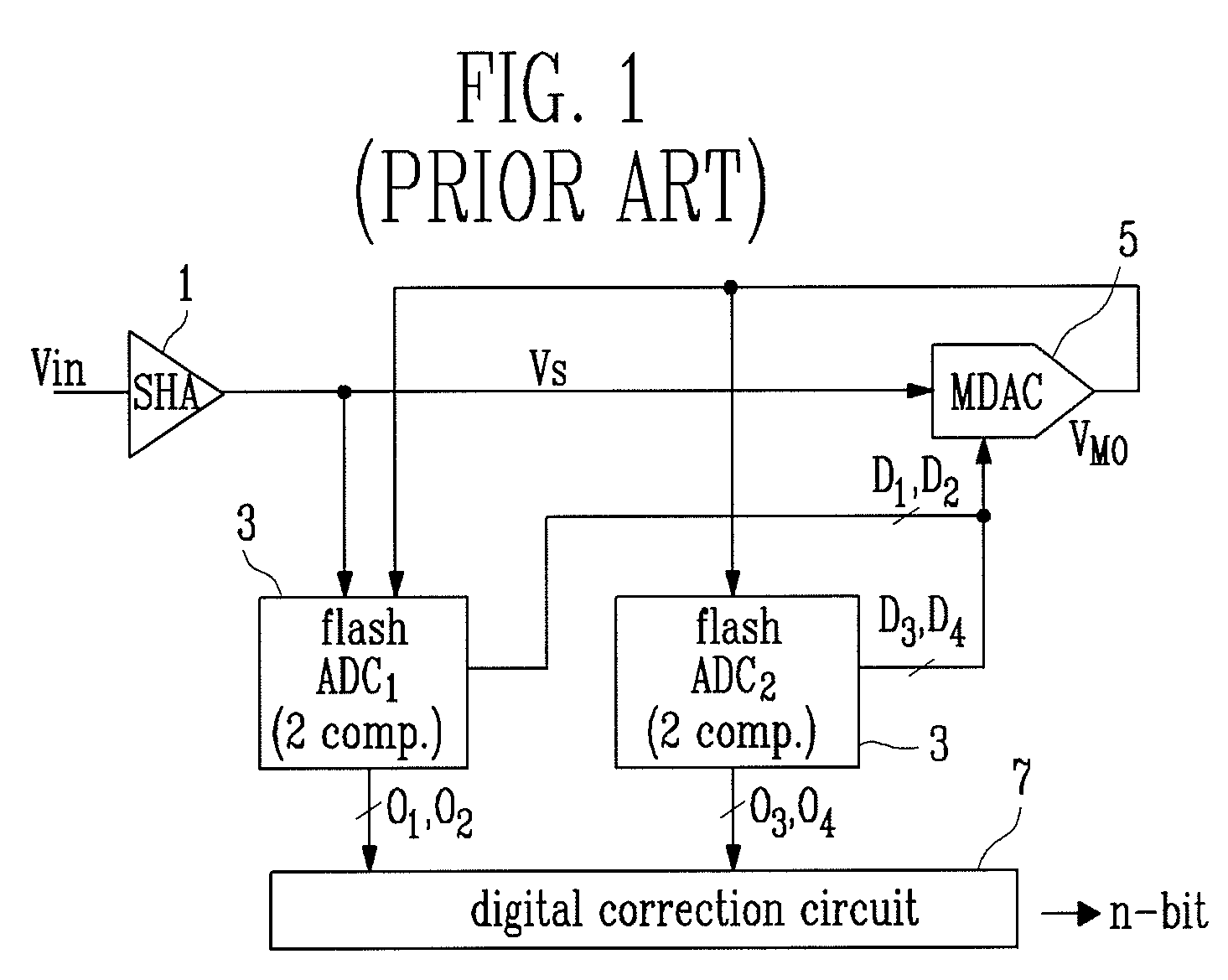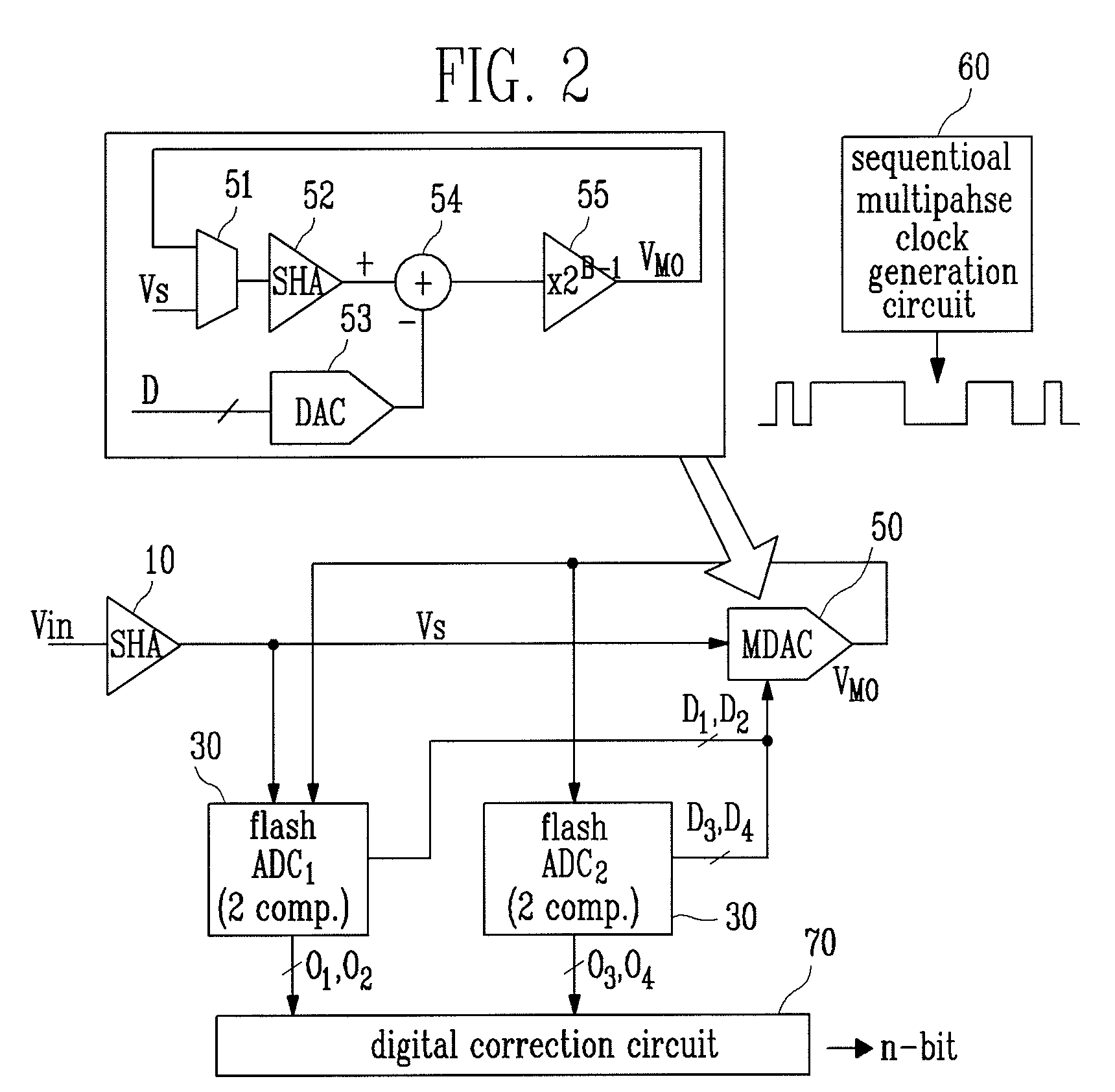Algorithm analog-to-digital converter
an algorithm and converter technology, applied in the field of algorithm analog-to-digital converters, can solve the problems of limited linearity of adc, limited given resolution, and loss of total snr by 3 db, and achieve the effect of minimizing the limitation of linearity resulting from capacitor mismatch
- Summary
- Abstract
- Description
- Claims
- Application Information
AI Technical Summary
Benefits of technology
Problems solved by technology
Method used
Image
Examples
Embodiment Construction
[0033]Hereinafter, an exemplary embodiment of the present invention will be described in detail. However, the present invention is not limited to the embodiment disclosed below, but can be implemented in various forms. Therefore, the following embodiment is described in order for this disclosure to be complete and enabling to those of ordinary skill in the art.
[0034]FIG. 2 is a circuit diagram illustrating an algorithm ADC according to an exemplary embodiment of the present invention.
[0035]As shown in FIG. 2, the algorithm ADC comprises: an SHA 10 for sampling and holding an input analog voltage; two flash ADCs 30 for converting one analog input signal into two digital signals through different capacitor connections and outputting the digital signals; one MDAC 50 for amplifying a difference between an output voltage Vs of the SHA 10 and a reference voltage ±Vref through different capacitor connections according to the digital signals output from the flash ADCs 30 (the SHA 10 also ou...
PUM
 Login to View More
Login to View More Abstract
Description
Claims
Application Information
 Login to View More
Login to View More - R&D
- Intellectual Property
- Life Sciences
- Materials
- Tech Scout
- Unparalleled Data Quality
- Higher Quality Content
- 60% Fewer Hallucinations
Browse by: Latest US Patents, China's latest patents, Technical Efficacy Thesaurus, Application Domain, Technology Topic, Popular Technical Reports.
© 2025 PatSnap. All rights reserved.Legal|Privacy policy|Modern Slavery Act Transparency Statement|Sitemap|About US| Contact US: help@patsnap.com



